Perfectlight Technology offers professional photoredox synthesis custom solutions, covering a wide range of applications from basic research to industrial use, enhancing production efficiency. The solution includes the following equipment options:
Screening and Discovery
PCX-50C Discover Multi-channel Photocatalytic Reaction System
Equipped with 9 parallel reaction positions, illuminated from the bottom, optional light source wavelengths, water-cooled temperature control. It effectively improves the efficiency of reaction condition screening and preparation of drug raw materials. It has been applied in research units such as Peking University, Tsinghua University, and the Institute of Chemistry, Chinese Academy of Sciences, for research on organic photocatalytic synthesis technology.
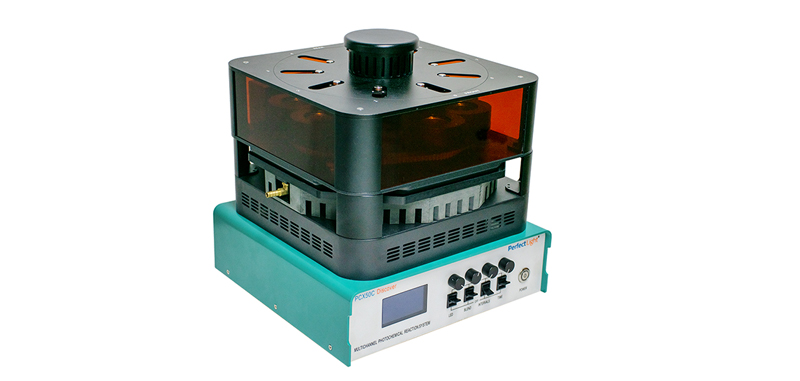
Application areas:
Photocatalytic synthesis of pharmaceuticals;
Screening of photocatalytic synthesis conditions.
Product features:
1. Multi-wavelength options, precise control of the optimal light wavelength by arbitrary combination, adjustable light power of 100~450 mW/cm2, suitable for low-light-power photosynthesis experiments;
① Used for substrate-initiated free radical chain reactions
UV light range λ/nm: 255, 275
② Used for visible light-induced catalyst-initiated free radical reactions, reducing side reactions caused by substrate excitation, increasing reaction selectivity
Visible light range λ/nm: (365, 385), 405, 410, 420, 435, 445, 450, 460, 475, 485, 505, 520, 525, 535, 550, 575, 590, 595, 620, 625, 630, 655, 685, 700, 730, 760, 770
③ Applicability to reactions under simulated sunlight
Vlight white light: 380~780 nm
④ Targeting the most common blue and green light absorption regions of photocatalysts in organic photosynthesis reactions λ/nm: 450, 460, 475, 485, 505, 520, 525, 535, 550, 575
2. Accurate water-cooled temperature control
Precise control within a temperature range of -10 to 80°C, accurate control at low temperatures reduces free radical activity, regulates reaction rates, reduces occurrence of side reactions, and enhances product selectivity. For asymmetric synthesis reactions, low temperatures can reduce chiral inversion and enhance product selectivity.
3. Flexible reaction vessel design to meet different reaction needs
Volumes of 1.5, 5, 10, and 50 mL reaction vessels are available to meet various catalytic reaction specifications. For slow-reacting reactions, the use of highly efficient plated reflective film vessels can effectively enhance light utilization efficiency and shorten reaction time.
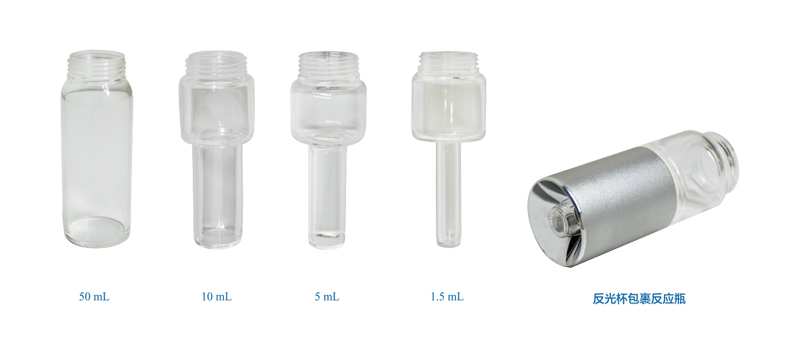
4. Nine-parallel Reactor
Microchip-mechanical linkage control mode is used for 1-9 parallel reaction positions, ensuring consistent and precise experimental parameters such as light source, stirring rate, and temperature. It improves experimental efficiency, ensures accurate and reproducible experimental data, and adjustable stirring speed of 0-500 r/min to meet the uniformity of homogeneous/heterogeneous catalytic reactions.
5. Controllable Reaction Atmosphere
Paired with pre-processing device PLA-MAC1005 Multi-Route Atmosphere Controller, it can accurately control the partial pressure of reaction gases such as CO₂, Cl₂, and O₂, meeting various experimental needs such as studying reaction kinetics and increasing pressure to accelerate reaction rates.
6. Expandable Real-time Detection Platform
Paired with PLA-GPA1000 Fully Automatic Sampler to form a photocatalytic workstation. With chromatographic analysis instruments, it can achieve automatic sampling of gases and liquids in the reaction system, monitor the photocatalytic reaction process in real-time, obtain concentration information of reactants and products, adjust and optimize reaction conditions in real-time, and accurately determine reaction duration.
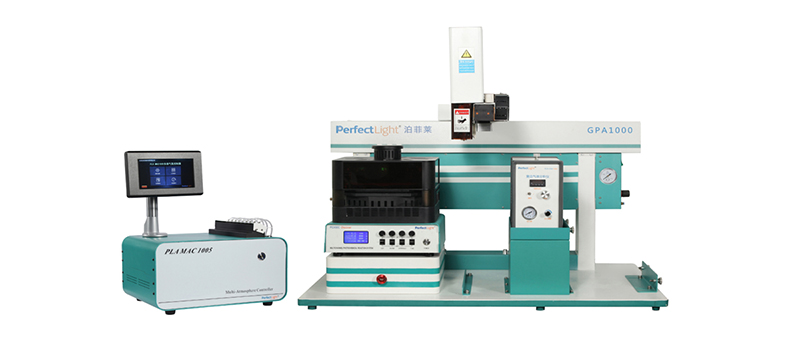
Screening and Discovery
PLR-SMCR1000 Multiphase Microchannel Reaction System
PLR-SMCR1000 Multiphase Microchannel Reactor System is a fully automated continuous-flow microreactor system that can monitor real-time influences of fluid reaction temperature, spectra, gas-liquid phase dispersion, and other conditions on reaction outcomes. It is applied in trace-level photochemical reactions, including pharmaceutical molecular synthesis, organic synthesis, liquid-phase homogeneous/heterogeneous gas-liquid reactions, and liquid-liquid non-homogeneous phase reactions.
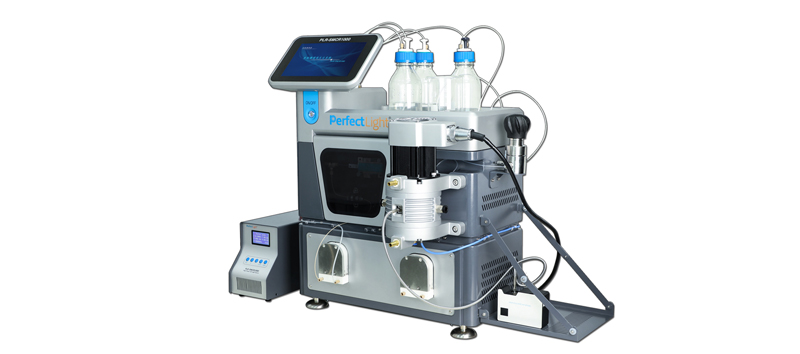
Application Areas:
Liquid-phase homogeneous photochemical synthesis;
Gas-liquid/liquid-liquid non-homogeneous photochemical synthesis;
Taylor flow gas-liquid two-phase mass transfer process behavior research.
Product Features:
1. Detachable, adjustable wavelength and power LED light
Multiple wavelengths are available within the range of 255-940 nm, allowing precise control to obtain optimal light wavelengths. The light source's electrical power can be adjusted from 10 to 120 W, making it suitable for photochemical synthesis experiments with slow reactions under low light power. It can be used for UV light-induced radical chain reactions, visible light-induced catalyst-initiated radical reactions, and simulations of reactions under sunlight exposure.
2. Precise water-cooling temperature control
Precise control within a temperature range of -20 to 80°C, with accurate control at low temperatures reducing radical activity, regulating reaction rates, reducing secondary reactions, and enhancing product selectivity. For asymmetric synthesis reactions, low temperatures can reduce chirality inversion and enhance product selectivity.
3. High heat transfer, high absorbance efficiency millimeter-scale (0.1-10 mm) reactor
Millimeter-scale (0.1-10 mm) reaction channels exhibit high mass transfer and heat transfer efficiency, significantly improving substrate mixing rates. The single-layer millimeter-scale structure increases the reactor's light-absorbing area, enhancing light reaction efficiency and shortening reaction times multiple-fold.
4. Combination of liquid-phase/gas-phase channels for thorough substrate mixing
Three sets of liquid-phase reaction channels combined with one set of gas-phase reaction channels. Liquid flow rates of 1.5-8.5 mL/min and gas flow rates of 4-20 mL/min can be controlled. This arrangement enables partial pre-mixing of substrates, enhancing the safety of reactions involving gas participation or generation. For gas-liquid/liquid-liquid non-homogeneous reactions, the device can promote intraphase mixing rates by introducing gas-liquid and liquid-liquid Taylor fluids, thereby increasing the contact area of the two phases and accelerating reaction rates.
5. Adjustable flow rate, selectable reaction volume
Reaction volumes of 5 mL and 10 mL are available, and matching flow rates allow for control of different residence times. This effectively increases substrate conversion rates and reduces the likelihood of secondary reactions.
6. Optional fiber optic spectrometer for real-time reaction monitoring
Enables online assessment of substrate conversion rates and product generation rates, facilitating rapid optimization of pre-mixing sequences, light intensity, flow rates, temperature, and other reaction conditions.
Mid-Scale Trial Production
L-scale Photochemical Synthesis System
The L-scale photochemical synthesis system is primarily used for mid-scale trial production of photochemical synthesis reactions. It provides a foundation for subsequent scaled-up production of photochemical synthesis reactions. It has been applied by a pharmaceutical company for the development and manufacturing of pharmaceutical intermediates and active pharmaceutical ingredients.
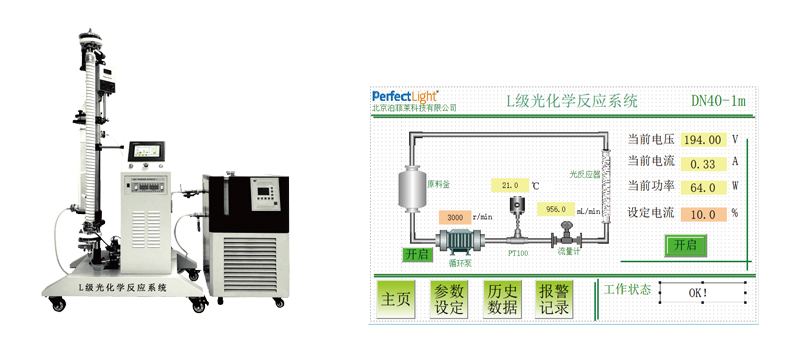
Application Areas:
Mid-scale trial production of pharmaceutical molecular synthesis and organic photochemical synthesis;
Production of pharmaceutical molecular synthesis;
Photochemical synthesis of pharmaceutical raw materials;
Production of pharmaceutical intermediates.
Product Features:
1. Mid-scale trial reaction level, providing a basis for further production expansion;
2. Flow reactor under light conditions;
3. Monitoring of material conveying process for easy control of reaction progress and adjustment of reaction conditions;
4. Flexible LED light source with long service life, customizable spectral bands;
5. Historical operational data can be accessed and exported;
6. Flowing tube reactor increases light-receiving area for more thorough reactions;
7. Mobile box, easy to transport;
8. Can be used independently or in combination to expand production scale;
9. Different types of reaction pipe materials can be customized based on specific reaction material categories.
Industrial Production
QingGuang DN50 Photochemical Reaction System
The QingGuang DN50 photochemical reaction system, based on the DN40 model, was developed to meet higher-level production needs. The original reaction pipe diameter was increased, and the overall pipeline of the reaction system was extended, resulting in a longer internal light reaction time and more uniform reactions. This enhances the yield and selectivity of the target product. It has been adopted by a publicly listed pharmaceutical company for research, development, and manufacturing of pharmaceutical intermediates and active pharmaceutical ingredients, leading to significantly improved photochemical synthesis yield and conversion rates.
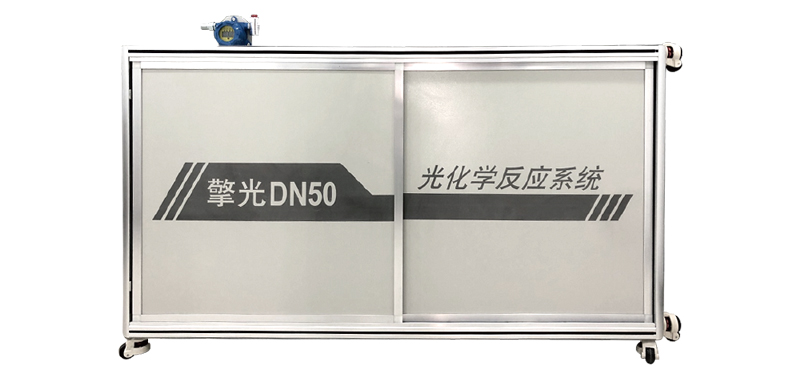
If you are interested in the above equipment, you can consult our online customer service or call 400-1161-365/010-62128921 for inquiries!
Recommended
Solution